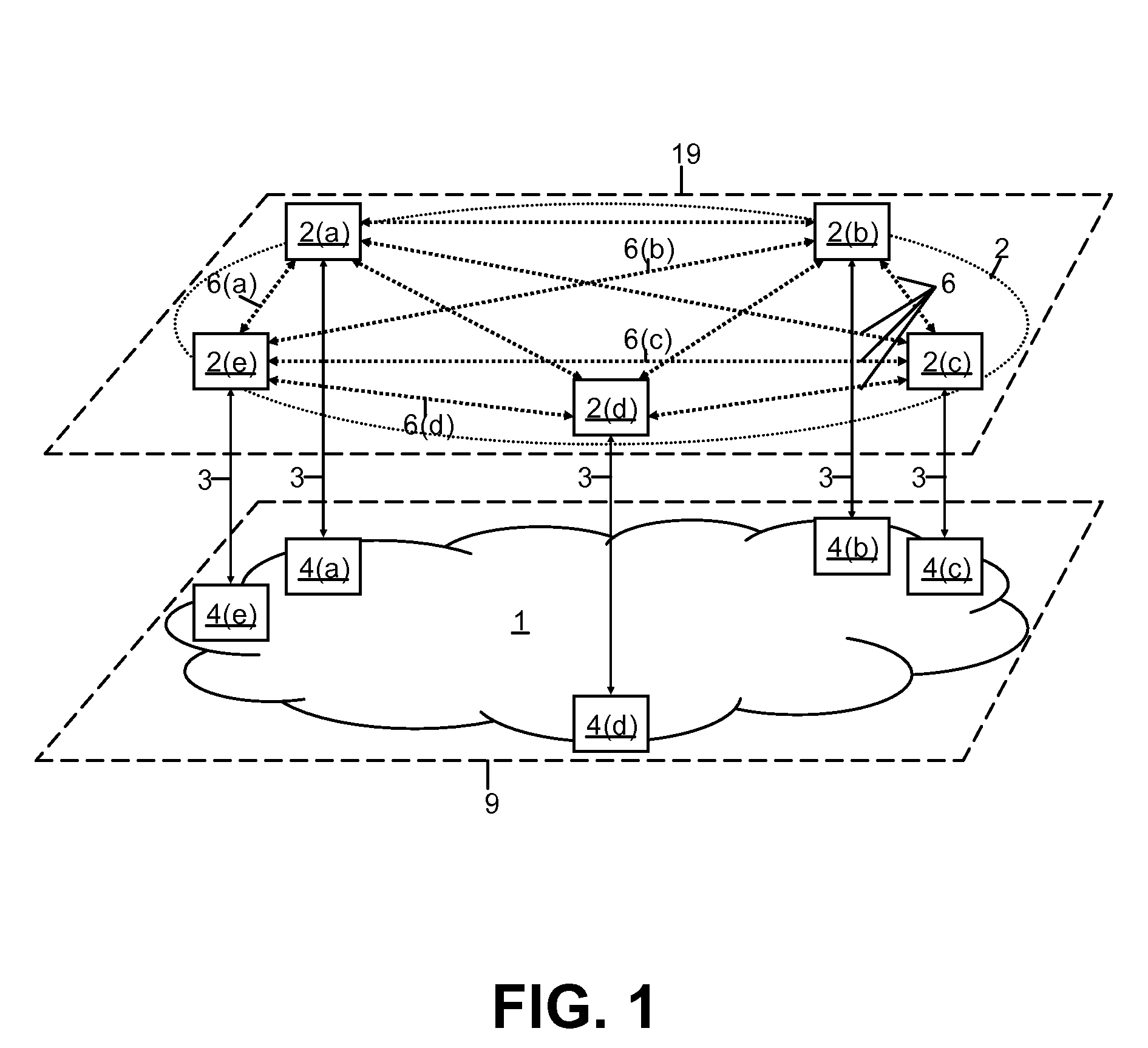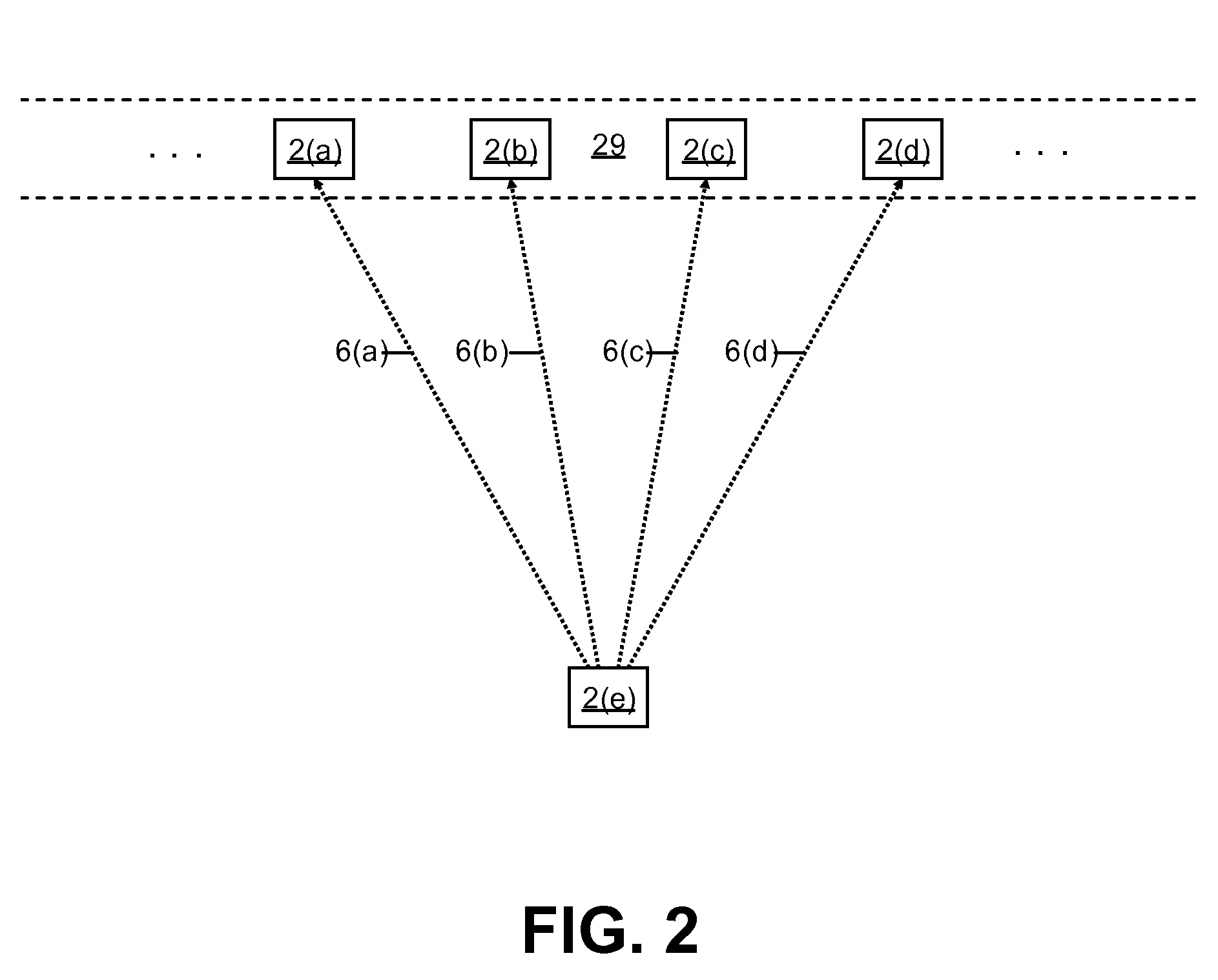Transparent, look-up-free packet forwarding method for optimizing global network throughput based on real-time route status
a packet forwarding and real-time routing technology, applied in the field of packet forwarding schemes in digital communications networks, can solve the problems of not being able to configure more than a single egress port, certain serious limitations of the current packet-switching technique, and the process is known to be rather complex, so as to achieve high-throughput packet-switched networking, efficient multicasting, and fast protection re-routing.
- Summary
- Abstract
- Description
- Claims
- Application Information
AI Technical Summary
Benefits of technology
Problems solved by technology
Method used
Image
Examples
Embodiment Construction
[0035]The invention is described herein first by illustrating the novel concepts via a more detailed discussion of the drawings, and then by providing specifications for a currently preferred embodiment of the invention.
[0036]Symbols and notations used in the drawings:[0037]Solid arrows indicate a communications signal i.e. data traffic flow. Dotted arrows between network elements (drawn as boxes) indicate direct i.e. transparent connectivity at the packet-layer. Gapped arrows indicate a route of a traffic flow across network.[0038]Boxes represent network elements, such as a packet-switch nodes.[0039]Cloud shapes, such as the one below the packet-switches 2 in FIG. 1, present an abstraction of a physical network interconnecting the nodes (4 in FIG. 1) on its edges.[0040]Circular, dotted-line, shapes mark a border of a group of drawn elements that form a logical entity, such as the set 2 of packet-switching nodes, elements 2(a) through 2(e), on the upper network layer 19, in FIG. 1, ...
PUM
 Login to View More
Login to View More Abstract
Description
Claims
Application Information
 Login to View More
Login to View More - R&D
- Intellectual Property
- Life Sciences
- Materials
- Tech Scout
- Unparalleled Data Quality
- Higher Quality Content
- 60% Fewer Hallucinations
Browse by: Latest US Patents, China's latest patents, Technical Efficacy Thesaurus, Application Domain, Technology Topic, Popular Technical Reports.
© 2025 PatSnap. All rights reserved.Legal|Privacy policy|Modern Slavery Act Transparency Statement|Sitemap|About US| Contact US: help@patsnap.com



